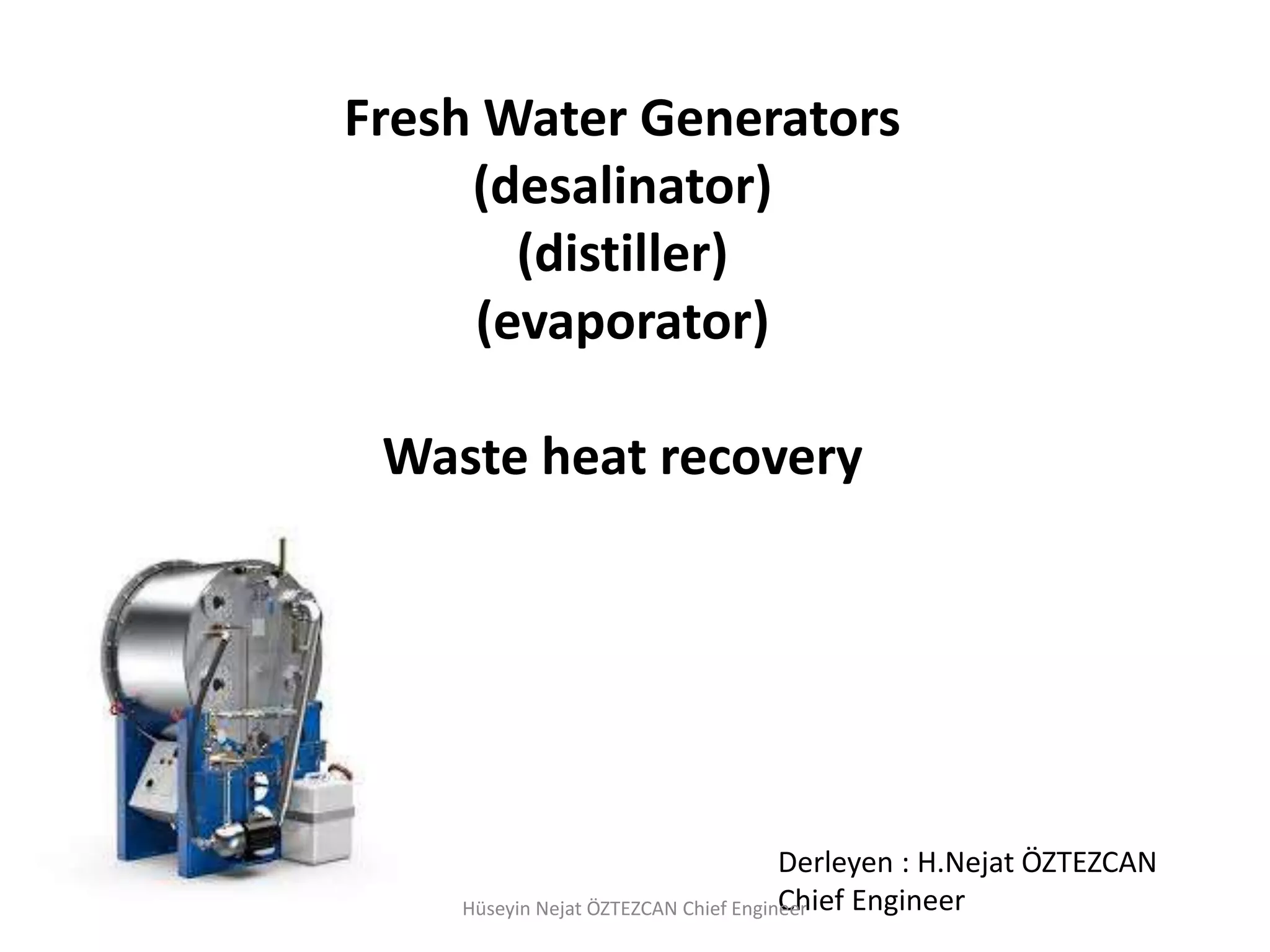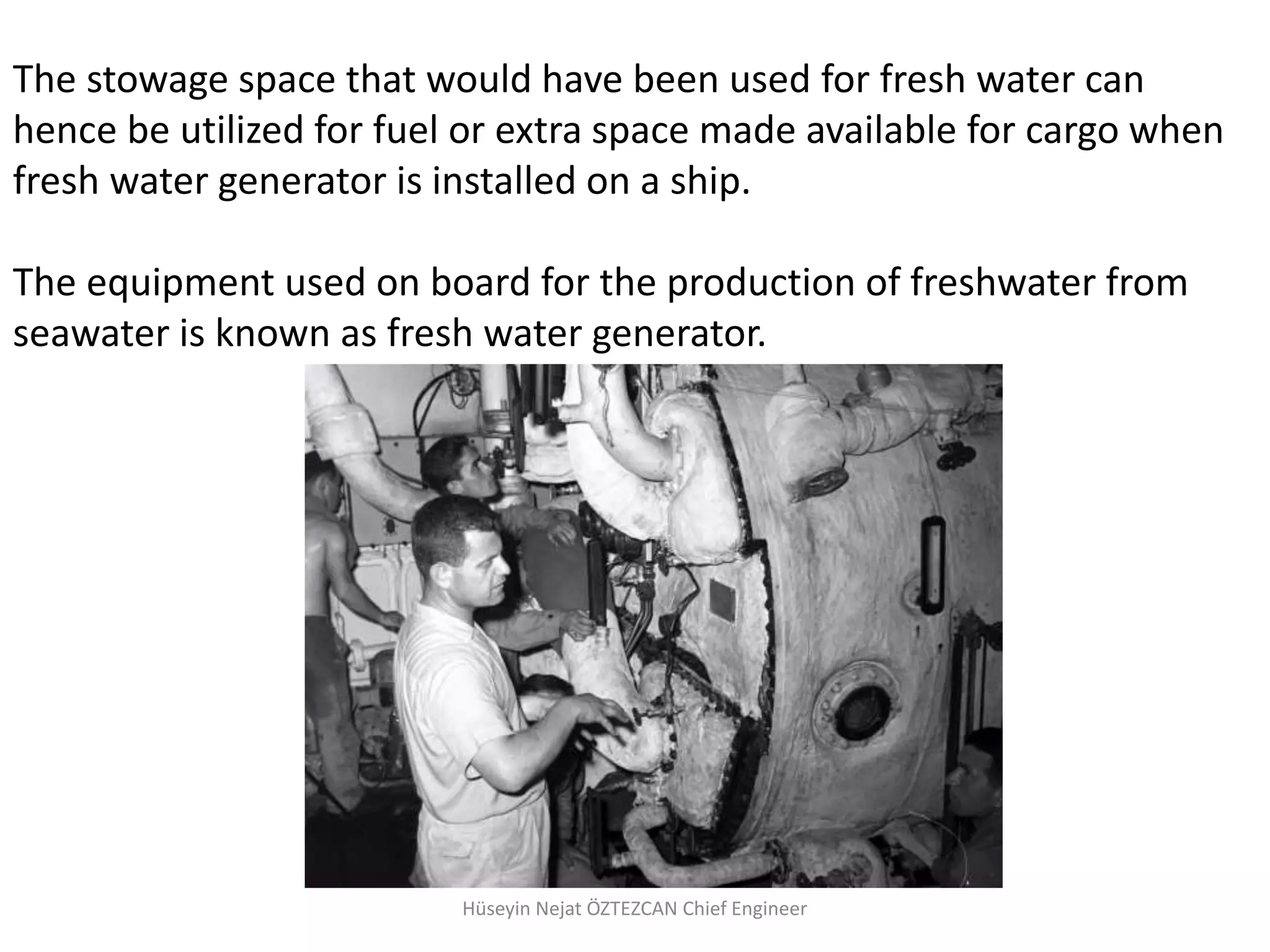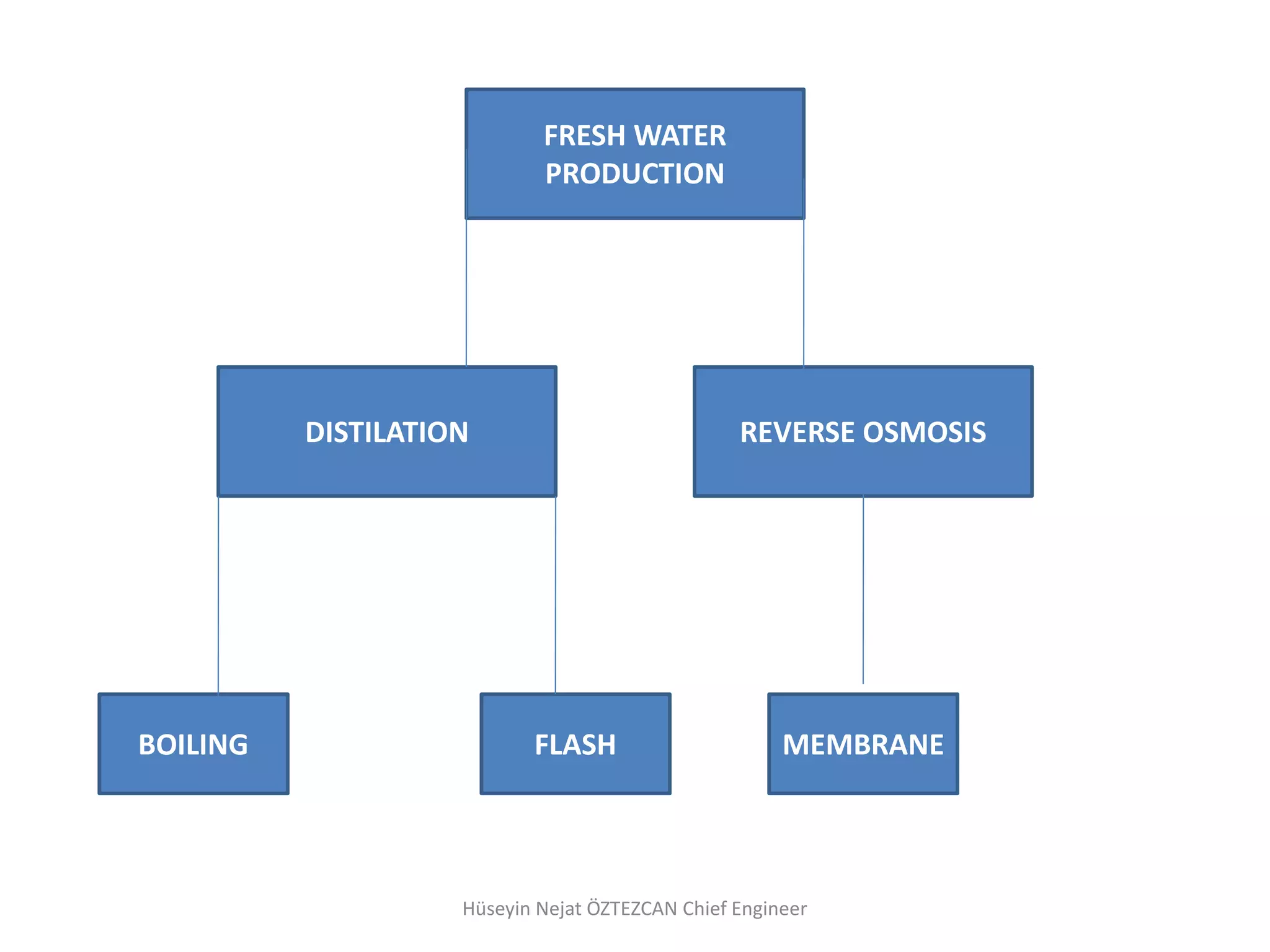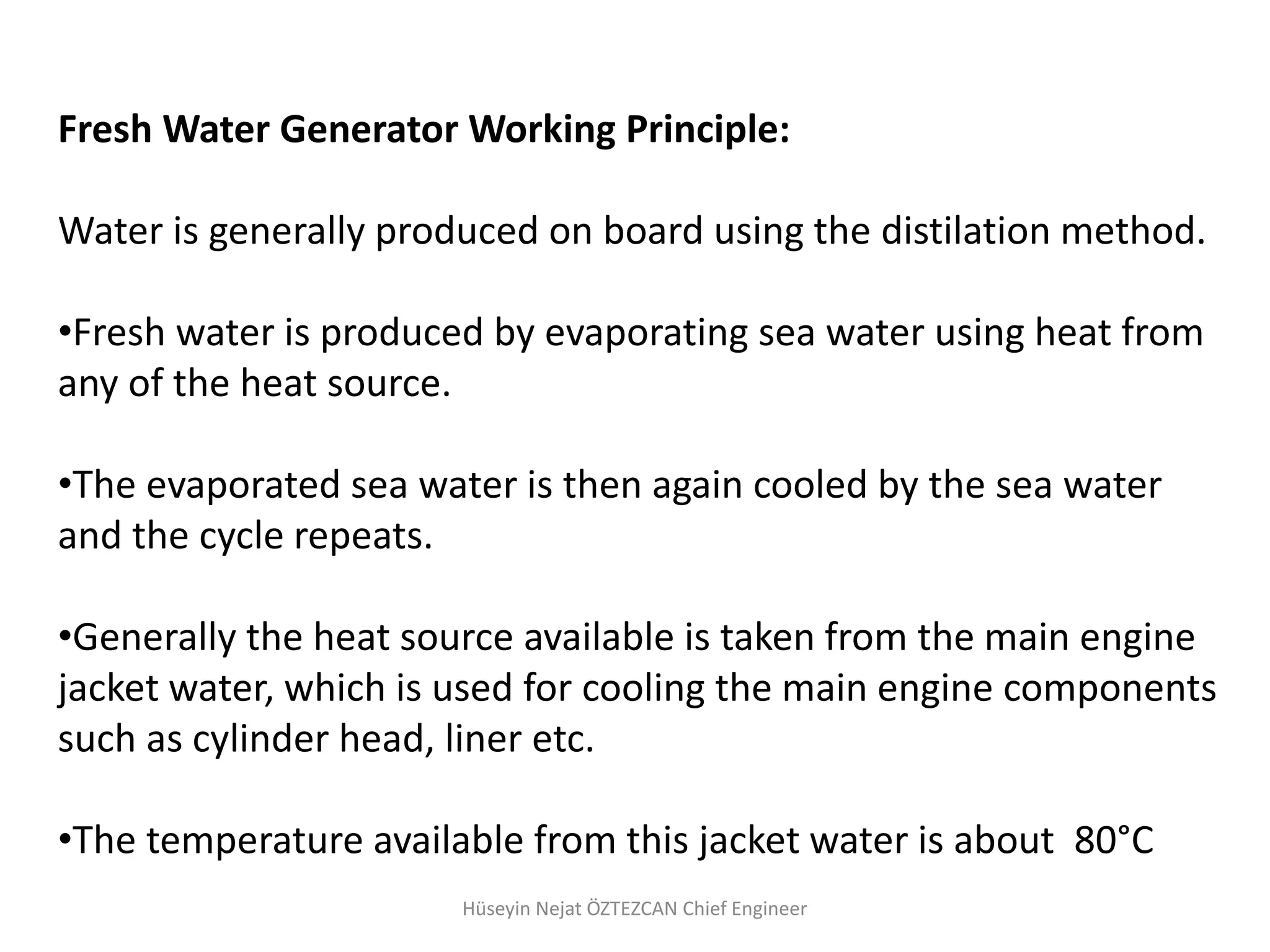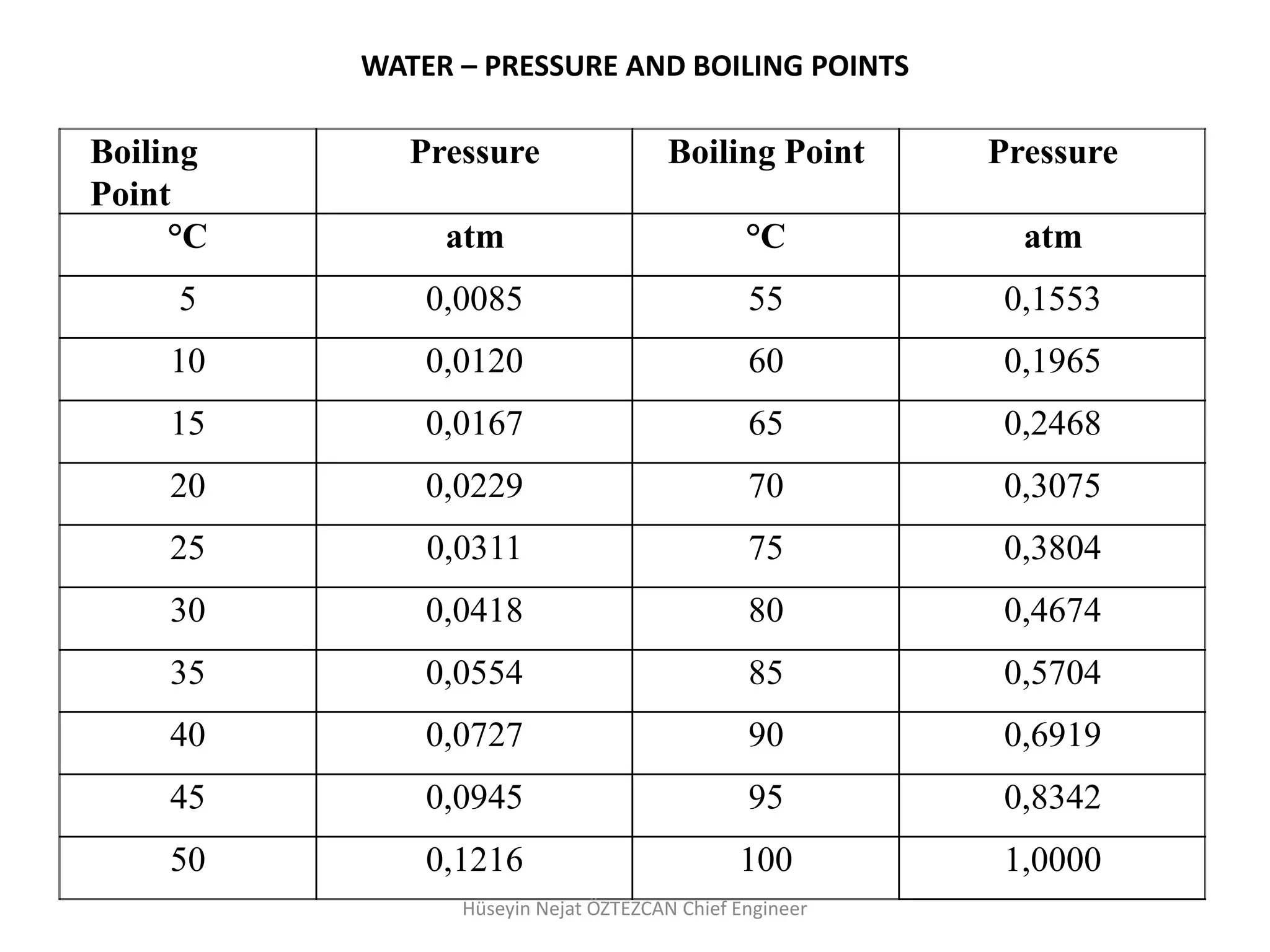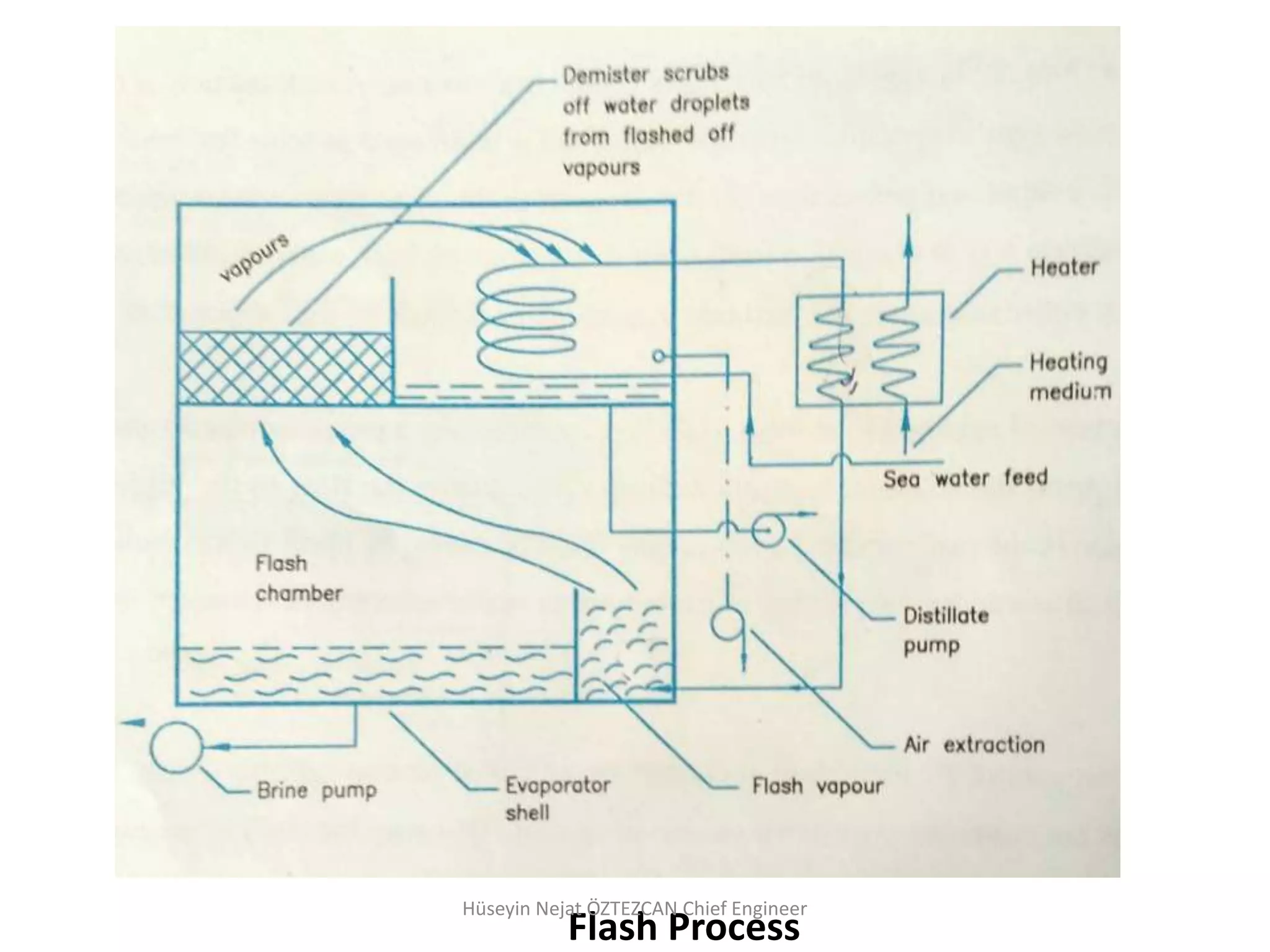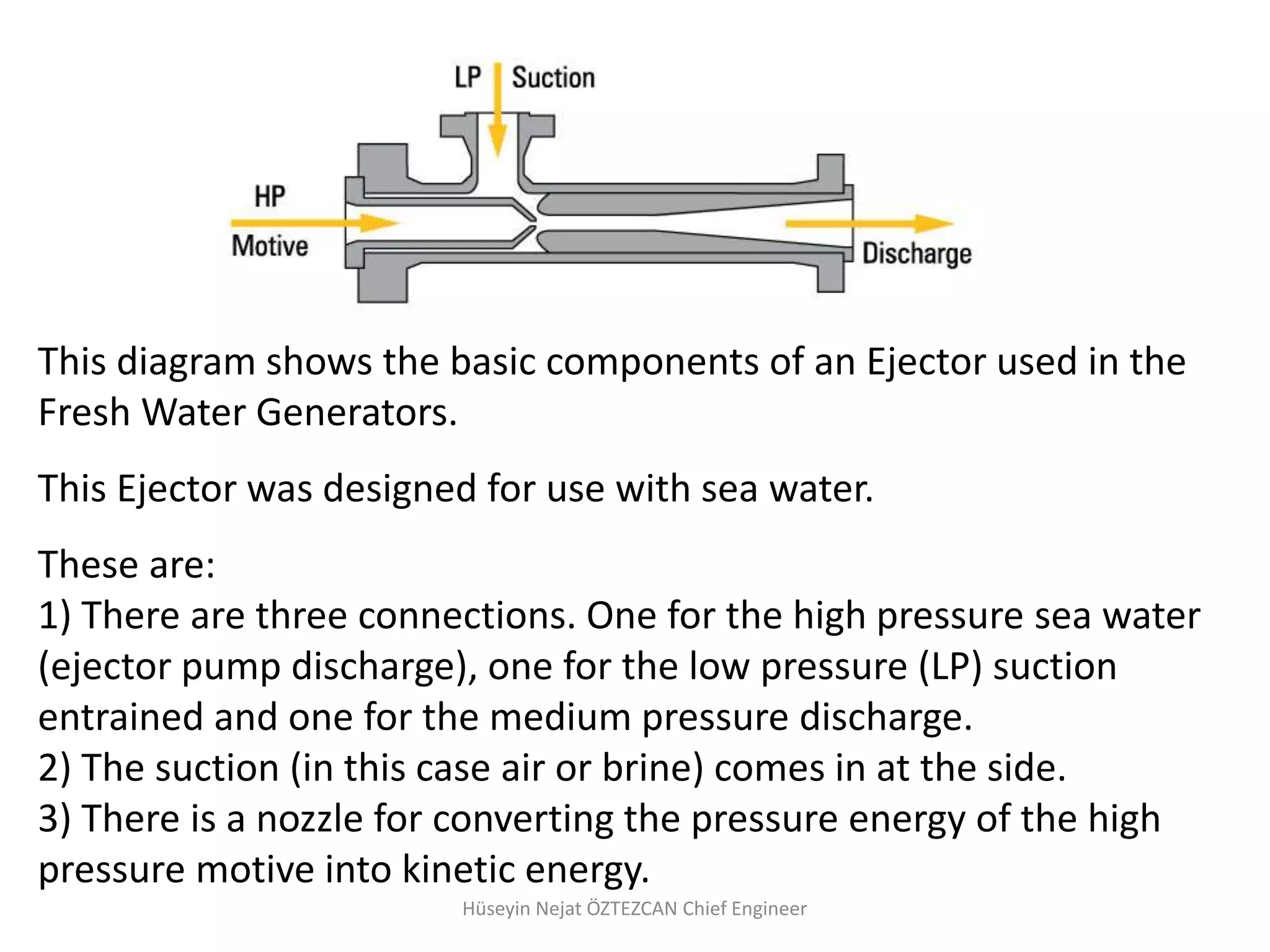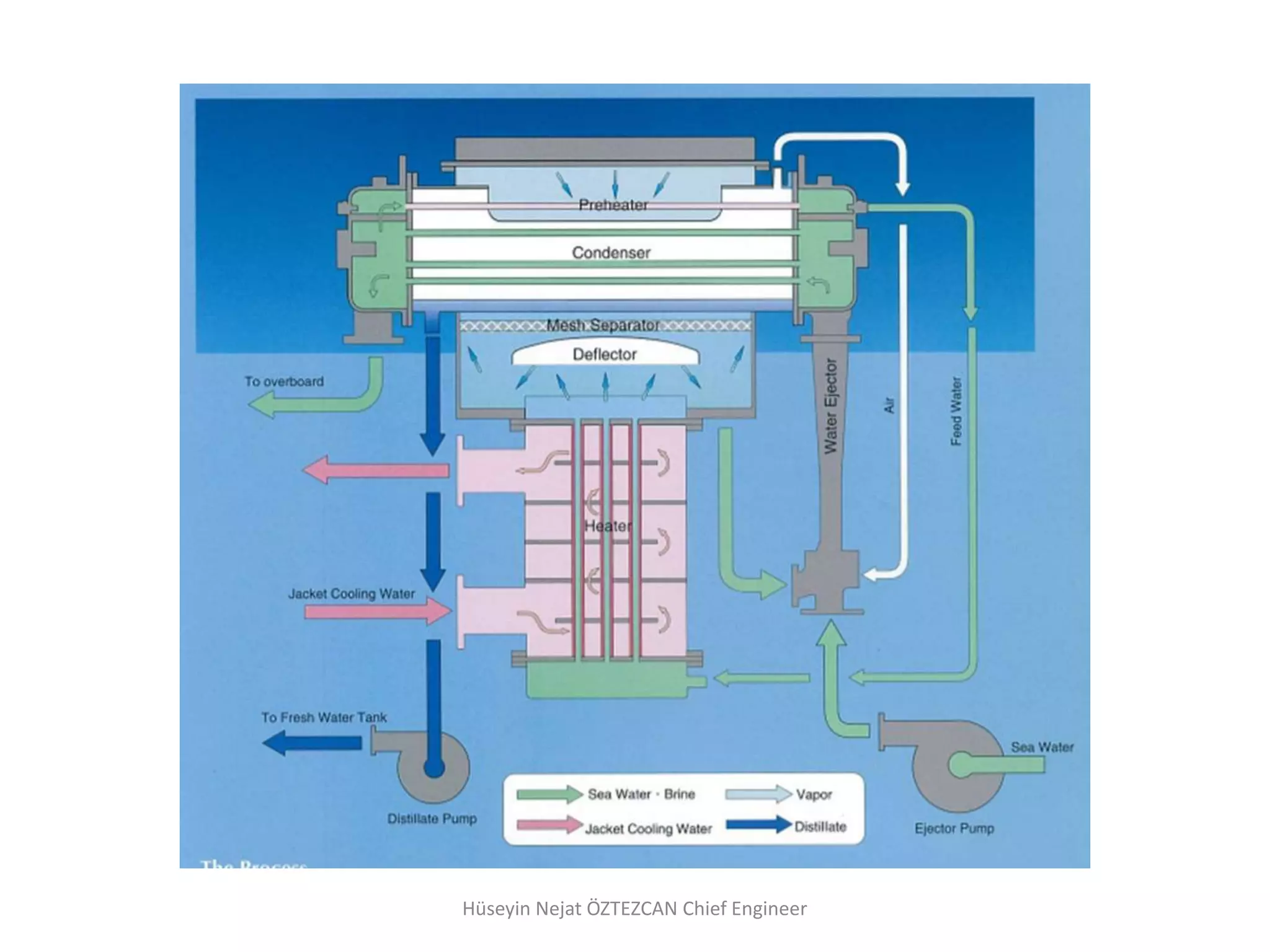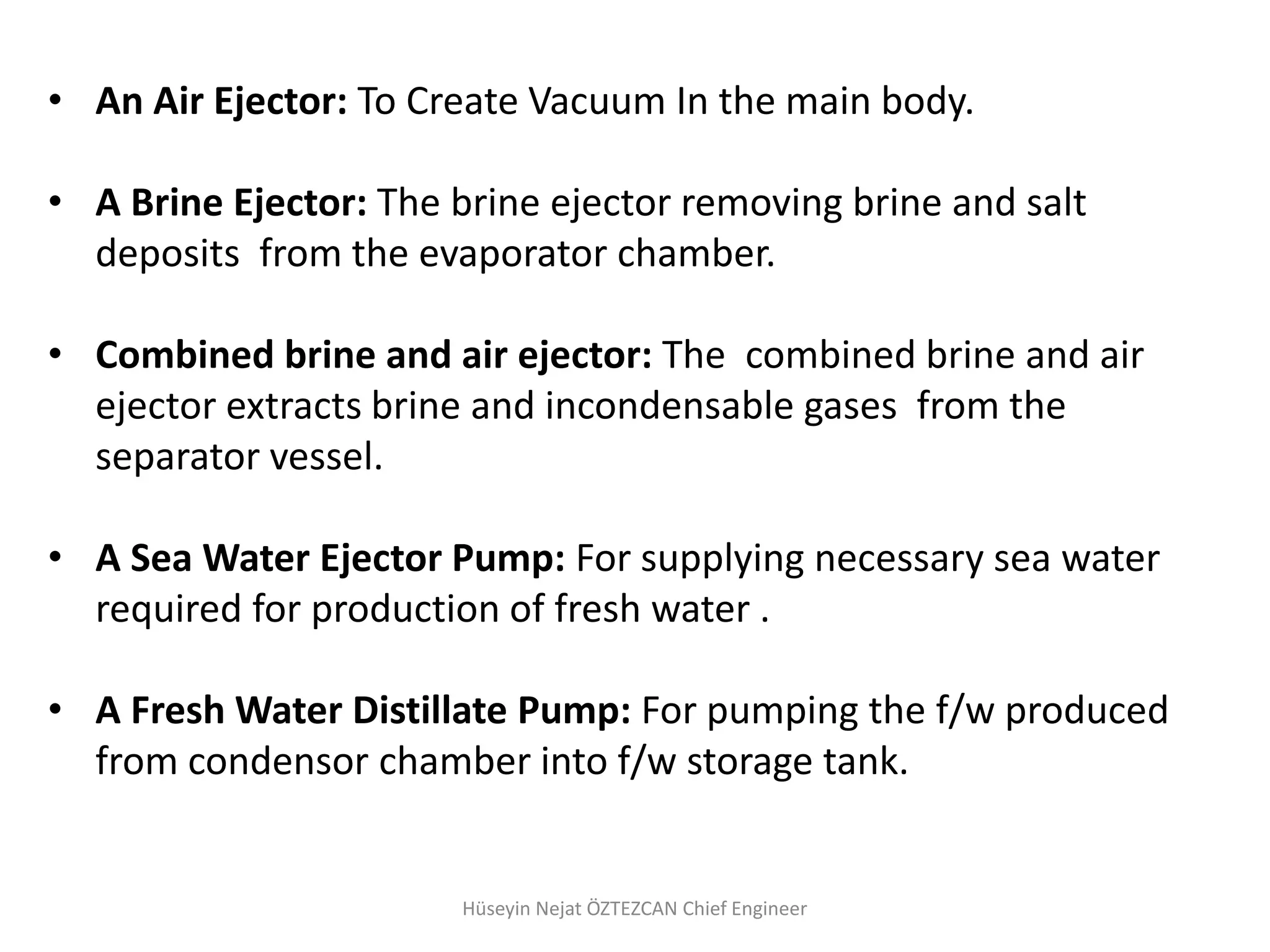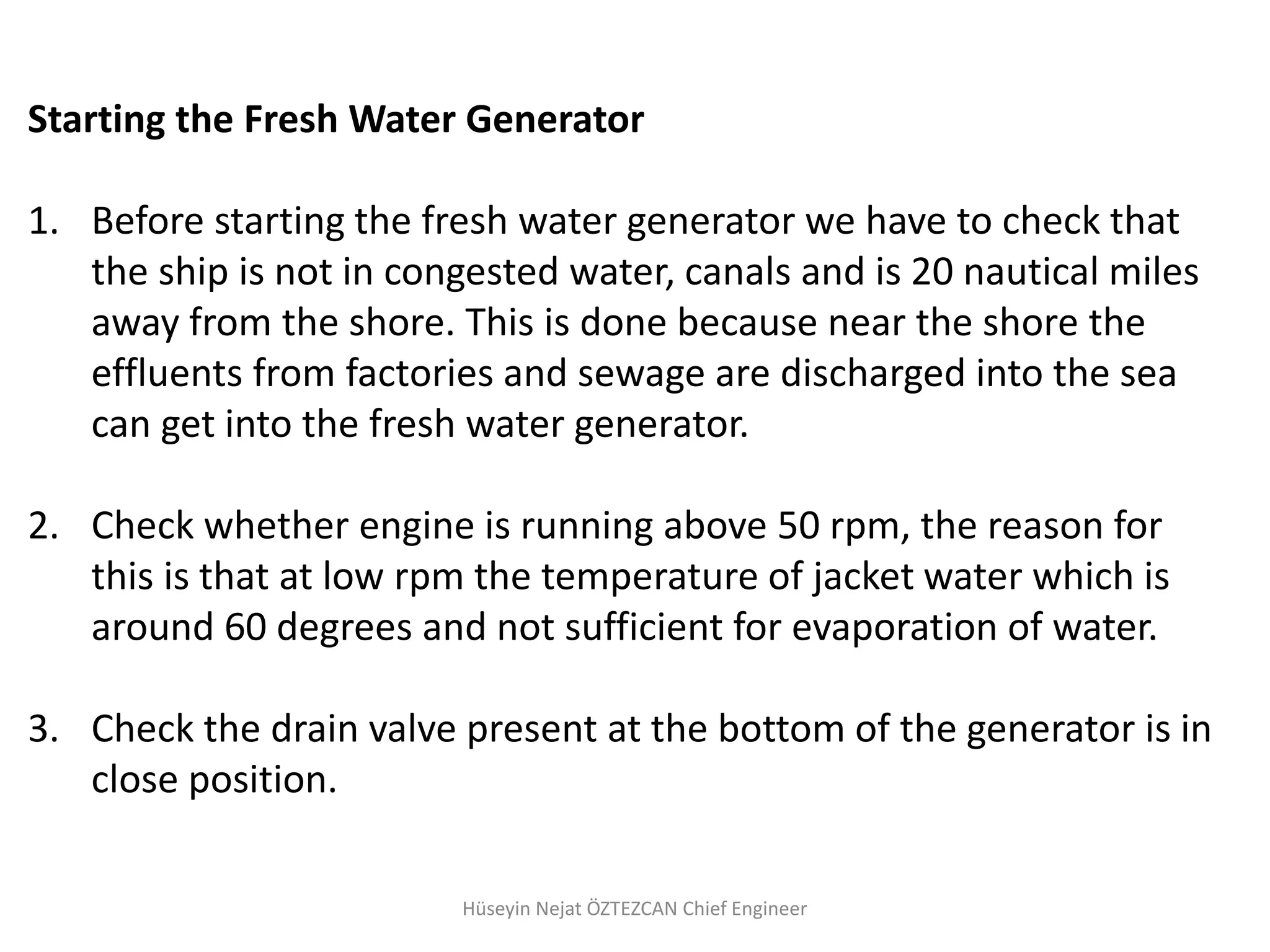Fresh water generators produce fresh water for domestic and auxiliary use aboard ships by distilling or desalinating sea water. They are essential aboard ships where fresh water consumption can be over 30 tonnes per day. There are two main methods - distillation and reverse osmosis. Distillation involves boiling sea water under vacuum to evaporate it, then condensing the vapor to produce fresh water. Reverse osmosis uses semipermeable membranes to filter out salt and other ions. Fresh water generators recover waste heat from sources like the main engine to economically produce fresh water as needed.
